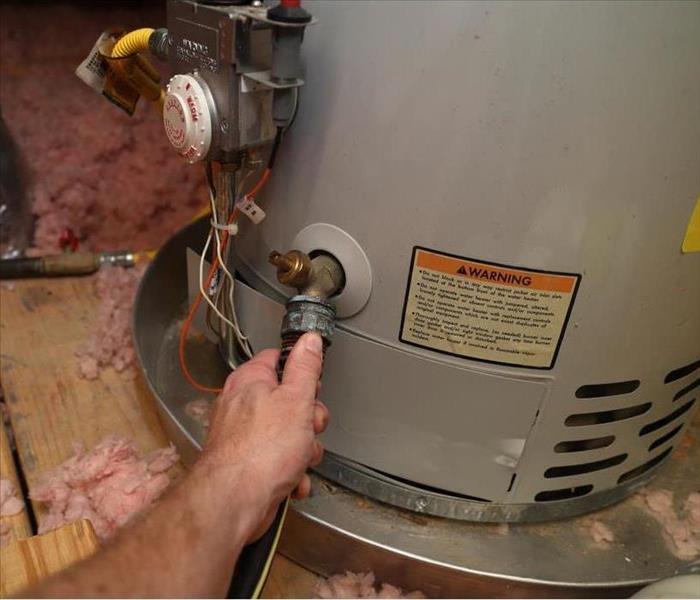How Do I Flush a Water Heater?
11/7/2022 (Permalink)
How To Flush a Water Heater?
Water heaters can often develop buildup over time that can lead to significant problems. In fact, you should flush your water heater at least every two years to keep it from getting clogged and prevent leaks. Flushing a water heater is easy and takes just a few hours. Here’s how.
Turn off the water heater
The first step to flushing your water heater is to turn off the power. Turn off both the gas supply and the water supply, as well as any pilots light if there are any.
Connect a garden hose to the drain valve
The second step is to connect a garden hose to the drain valve. The end of the hose will come out of it, and then you can direct it outside.
Then, turn on your water heater's electricity or gas supply and wait for any remaining water inside to be drained out through the hose and into your yard or driveway. Depending on how much water has been stored inside, this may take anywhere from 15 minutes up to several hours.
Run the other end of the garden hose outdoors or into a large bucket.
- Make sure your garden hose is long enough to reach outside.
- The hose must also be wide enough to withstand the pressure of the water; if it's too narrow, it could burst as you run hot water through it.
- Finally, make sure that your garden hose is strong enough for the volume of water you're putting through it.
Open the drain valve and let the water heater flush out.
- Turn off your heater and your faucets, disconnecting anything that may be connected to them. If you have a hose connected to the water heater, make sure that it is disconnected as well.
- Use a wrench to loosen up any fittings on your old tank before removing it from its place in your home's basement or garage (or wherever you decided to put it). You may need an extra set of hands for this step.
When most of the water has drained, shut off the drain valve and disconnect the hose.
- Locate your water heater's drain valve and turn it clockwise to close it. The valve is usually located near or on top of your hot-water tank.
- Disconnect the other end of your flexible hose from its fitting in your home's plumbing system (near where you just turned off the supply valve).
- Check that there is no water left in your tank before turning on another faucet or allowing a sink to fill up—you don't want any residual water from inside your heater to go back into your home's plumbing system!
Turn on the water heater and check for leaks at any valves you opened or removed.
You should turn on the water heater and check for leaks at any valves you opened or removed. If you see a leak, shut off the water heater and fix the problem before turning it back on.
Flushing a water heater is an easy job that can keep your system running well.
Flushing a water heater is an easy job that can keep your system running well. A water heater is not complicated, but it does involve some high-pressure water and hot temperatures. Flushing a water heater is something you can do yourself if you have the right tools and follow the steps carefully.
It’s also important to remember that while flushing takes only a few minutes, letting your hot water sit overnight could take hours or even days depending on how much sediment has built up inside of it over time — so make sure you plan accordingly before trying this method out!
Flushing a water heater is an easy job that can keep your system running well. It's important to keep up with regular maintenance on all kinds of systems, but especially ones that provide hot water for your home. So, if you don't feel like dealing with this task yourself, don’t be afraid to call a professional like SERVPRO of Sanibel Ft. Myers Beach!






 24/7 Emergency Service
24/7 Emergency Service
